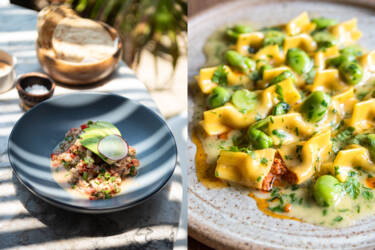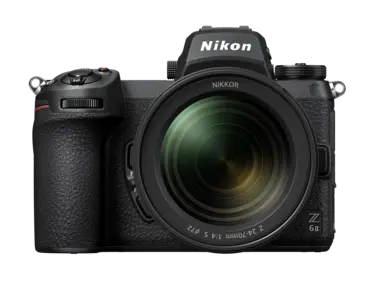How to photograph restaurant food

Travel and food photographer Giulia Verdinelli dishes up her advice on how to create mouthwatering images of food in restaurants
Restaurants offer a great opportunity to update your portfolio with images of beautifully plated dishes. However, capturing food in these environments presents unique challenges. Light is often dim and scarce, space is limited, and manners matter.
After working for more than a decade as a professional food photographer with top clients such as National Geographic Food and many international Michelin-starred restaurants, I’ve made all the mistakes that can be made and learned from.
In this article, I’ll share powerful tips for creating the best images of food in any restaurant, overcoming the most common challenges and avoiding annoying your dining neighbours.
Find the best light in the restaurant
If photography is your main goal for a restaurant visit, lunchtime is best. To have control over where you sit, book ahead or arrive early to secure a spot near a window. Sit with the window to your left or right. Side light works well with most subjects, adds three-dimensionality to the dish and highlights the texture of food. Alternatively, sit alfresco on outdoor tables. You can sometimes be rewarded with photogenic dappled light.


Choose your seat wisely in dark restaurants
At night or in dim interiors, first identify the main light source. Place your hand just above the table and look at the shadows. If they fall directly below, the light is overhead. It will cast harsh shadows beneath food or plates and create a distracting glare on plates and cutlery. Choose a table where shadows fall to the side. This light is more flattering, adds depth and reduces glare on glossy surfaces.
Troubleshooting shadows with napkins
Artificial restaurant light often casts harsh, dark shadows. Use something white, such as a napkin, menu or even a plate, to bounce light back on to the subject. This helps soften shadows and evens out contrast if one side of the dish is too dark.


Camera settings for dim interiors
Good gear is a major advantage when photographing in challenging restaurant environments. You need a camera that can perform well in low light, and my go-to is the Nikon Z6II. It can comfortably handle high ISO without compromising image quality. Since you’re photographing handheld, you need a fast enough shutter to avoid motion blur. A good baseline is 1/125 or faster.
Light is often scarce, so it’s important to let in as much as possible. Fast lenses such as the NIKKOR Z 24-70mm f/2.8 S or the NIKKOR Z 50mm f/1.8 S are your allies. Set your aperture between f/1.8 and f/2.8 and focus on the main garnish of your dish. Use focus assist if needed to ensure your subject is sharp. Start with the lowest possible ISO to get the correct exposure and increase it as needed.
Handling mixed lighting in restaurants
One of the main challenges in restaurants is mixed light sources (such as LED and tungsten bulbs) that will cast weird colours on your subjects. The Nikon Z6II balances these colours well, so set the White Balance to Auto. It’s important to photograph in RAW so you can make small corrections in post.
Work on tight, messy tables
Busy backgrounds and clutter on tight table space (sauce bottles, salt and pepper shakers, crumpled napkins) can create distractions in your image. Watch your frame for anything drawing attention away from the food and rearrange it intentionally (or remove it). A lens with a wide aperture, such as the NIKKOR Z 50mm f/1.8 S can help you blur the background, isolating the subject from the mess.


Pick the best angle for the dish
A 45° angle is a great starting point for most dishes. It’s the natural way we see food while dining, and it often highlights texture and plating well. An overhead angle works well with flat food such as pizzas and in tight spaces. Fill the frame with your subject and crop out any clutter or distractions to keep the composition clean. Use the Nikon Z6II tilting screen to stay seated while framing. Taller items, such as burgers or stacks, look better at eye level to show height and details. The tilting screen is your friend here, too.
How to be stealthy and not annoy your neighbours
When photographing in a restaurant, aim to keep a low profile. This is where having the right gear can make a difference. The tilting screen of the Nikon Z6II makes it easy to compose images from different angles while remaining seated. A versatile zoom lens such as the NIKKOR Z 24-70mm f/2.8 S is another precious tool to capture a variety of compositions without having to stand, shuffle around or disrupt your neighbours’ dining experience.


Editing tips for fine-tuning your images
Even after following these tips, editing can give your images a little extra push. Start by fine-tuning the White Balance. Mixed lighting can give your food an orange, green or magenta cast. Use the White Balance picker and sample from a neutral area such as a white plate or napkin. Or adjust manually until the colours feel natural and the food looks appetising. If the light was dim and you were forced to underexpose, increase the exposure and lift the shadows slightly to recover detail in dark areas. The Nikon Z6II retains quality and sharpness even at high ISO, but increasing exposure in post might make the image grainy. You can regain quality by using the denoise function, if needed.
With the right preparation, the best possible light, and a few key camera settings, you can balance technical choices with real-world limitations.
And once you’ve got the image, put the camera down and enjoy the food.
Hungry for more?
More by Giulia Verdinelli

Unlock greater creativity








